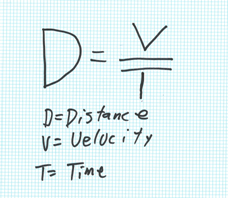

By definition, ultrasound is cyclic sound pressure with a frequency greater than the upper limit of human hearing. When we talk about ultrasound as it relates to NDE, it is useful to understand some of the background to the technique. As a rule, no matter how complex or obscure the specific ultrasound technique is, the fundamentals will always apply.

What kind of conditions are required to propagate a sound wave? It turns out that a sound wave can be produced in any solid, liquid, or gas. Different media have different values for the speed of sound. For example, the speed of sound in gases depends on temperature. In 20 °C (68 °F) air at sea level, the speed of sound is approximately 343 m/s (1,230 km/h; 767 mph). In fresh water, also at 20 °C, the speed of sound is approximately 1,482 m/s (5,335 km/h; 3,315 mph). In steel, the speed of sound is about 5,960 m/s (21,460 km/h; 13,330mph).
If we wanted to measure the thickness of a piece of steel, we can invoke d=v/t. The trick to accomplishing this is measuring the time that the sound wave is traveling in the steel. The speeds of sound in steel is approximately 13,330mph and let’s assume that the steel is 1 foot thick. It will take approximately 0.00005 seconds for the sound to get to the back wall of the piece of steel and 0.00010 seconds for the echo to return. Imagine trying to measure this time by counting, “one one thousand, two one thousand, three one thousand”. It’s a good thing we have good clocks, otherwise this wouldn’t be a very useful technique.
So, now we know how to measure distances using sound and we know that we need a really good clock if we want to measure something where the speed of sound is very fast, like steel. How do you set up a sound wave in something solid anyway? You just can’t yell at it. The sound energy will just bounce of the surface and you will have an echo.
We have to find a way to get energy inside the object we want to look at……..
These are some of the extremely basic concepts of ultrasonic testing. So why do you care???? Because, this is one of the ways we can be sure that the airplane your flying on is safe, or the pipeline carrying fuel for you car is not going to dump thousands of gallons of oil in the river.
Next Blog……. Getting Inside a Steel Trap.

